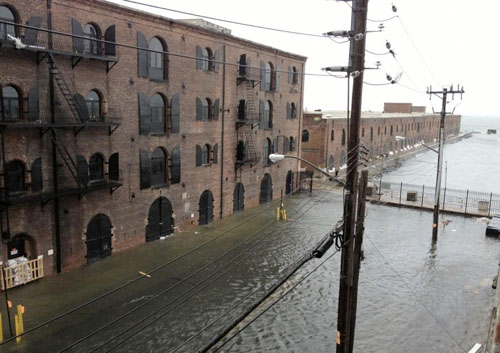The study, which the city plans to release Tuesday, says that the Build It Back program was plagued by problems from its inception and bogged down by hastily created intake centers and federal restrictions tied to funding.
Build It Back was designed to repair, rebuild, elevate or, in some cases, buy out homes along the coastal edge of the city that the storm damaged. The program started eight months after Sandy struck the city on Oct. 29, 2012. The cost of the program, now nearly six years old, has ballooned to $2.2 billion, $500 million more than its original estimated budget.
The study, jointly conducted by the city and the Center for Urban Research at the City University of New York Graduate Center, looks at what went wrong, why so many people left and the lessons learned that could be applied to future disasters.
“It’s good to get it out now to be able to hopefully trigger the conversation in a larger way,” said Amy Peterson, who has overseen the program since she was appointed by Mayor Bill de Blasio in 2014. Ms. Peterson said the data could inform disaster recovery in the future in New York City and around the country.
The program started four months after the first tranche of federal Department of Housing and Urban Development disaster relief grants were released. The city set up customer-service centers, hired temporary workers and began registering people for the program.
Applicants would sign up, submit documentation and then an inspector would visit the home to assess damage. But these centers opened quickly and were staffed with temporary workers who didn’t know much about the complex program, according to the study.
By Oct. 31, 2013, 20,275 households had signed up for Build It Back, according to the study. Of the households that registered for Build It Back during its rollout, 26% didn’t submit an application. Another 26% completed an application but didn’t choose a final option, effectively withdrawing from the program.
By October 2016, when the data for the study was tallied, the city had more than 8,000 applicants who remained in the program. To date, 97% of those who stayed on have had their work completed, or received their reimbursement, and most of the construction projects are completed, according to the city.
But there were still challenges once a homeowner made it through to construction, including monthslong delays and permitting issues.
“Nobody had ever done elevation at this scale in New York City like this before,” said Brad Gair, who was in charge of the city’s Office of Housing Recovery Operations under Mayor Michael Bloomberg. The city learned as the rebuilding went along, he said.
The study found that the people who continued with Build It Back had the most damage to their homes or received fewer insurance benefits than other homeowners. Applicants who used legal and financial assistance were also more likely to stay with the program.
This showed that it ultimately served its intended purpose: to help New Yorkers who needed it the most, Ms. Peterson said.
“The people who had the most damage and the least other benefits from other sources were the people who needed to be helped the most,” she said. “They persisted through the program to take advantage of it.”
Critics of the program, though, said many homeowners who needed the help were turned off by lost paperwork and confusion over information.
During Sandy, the basement of Igor Yampolsky’s Belle Harbor, Queens, home flooded. His house began to slant, and cracks appeared in his ceilings and walls, he said.
Mr. Yampolsky said Build It Back told him he didn’t qualify for any structural repairs and would only do mold and lead paint remediation in his home, which he lives in with his wife and two children.
In 2016, he said the Build It Back program sent him a letter saying he had been unresponsive and would be removed from the program.
“I couldn’t tell you how many times I submitted the same exact forms into them because they kept losing them, or it wasn’t attached to my file,” said Mr. Yampolsky, 41 years old.
City Councilman Mark Treyger, who represents Sandy-damaged neighborhoods in Brooklyn, including Coney Island, said the report shows the multiple missteps from the start of Build It Back.
“I think this latest report is just further confirmation that the structural flaws of the rollout of the program lead to such complications for Sandy survivors, that it got worse further along in the process,” he said.













